MARKETING
9 VR Marketing Examples to Inspire You in 2022
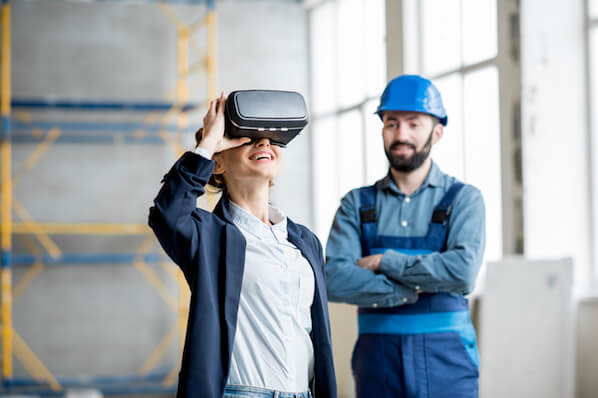
I won’t lecture you on the importance of incorporating virtual reality (VR) into your marketing strategy.
What I will do, however, is share a few fun facts about VR and show you nine examples of this technology used for marketing a product or a brand.
- Consumer and enterprise VR market revenue is expected to reach $6.71 billion by the end of 2022, and $12.9 billion by 2024.
- Augmented reality, virtual reality, and mixed reality market size worldwide is expected to jump by more than 220 billion dollars between 2021 and 2028.
- By the end of 2022, it is estimated that virtual reality hardware and software sales will generate more than $6.4 billion dollars in revenue.
- By the end of 2020, the number of VR headsets sold is predicted to reach 82 million — a 1,507% increase from 2017 predicted totals.
VR is growing in its adoption, and it’s worth considering adding it to your marketing channels in the coming year.
What Is VR?
VR, short for virtual reality, is software that immerses users in a three-dimensional, virtual interactive environment — usually by headset with special lenses — to simulate a real-life experience. Many VR experiences take place in 360 degrees.
While movies, for example, allow audiences to experience the film as if they are a character in the scene, businesses use VR to demonstrate and promote their products to potential customers. In fact, many industries have found a use of VR to transport people to places they might otherwise have to travel to or simply imagine.
Before we dive into some examples of businesses that have used VR for marketing, it’s worth noting that virtual reality has a few key differences from another term you might’ve heard before in the same sphere: augmented reality. The video below runs through the key differences.
Seeking inspiration for your own VR marketing campaign? Look no further. Below are nine of our favorite VR marketing campaigns and how they served the company’s marketing strategy.
Virtual Reality (VR) Marketing Examples
- Gucci Town
- Sephora’s Try-on Kiosk
- Wendy’s and VMLY&R: Keeping Fortnite Fresh
- A Tribal Past: Bear River, a Nation: What Can Eeling Teach Us?
- Adidas: Delicatessen
- Lowe’s: Holoroom How To
- Boursin: The Sensorium
- Toms: Virtual Giving Trip
- DP World: Caucedo Facilities Tour
1. Gucci Town
High-end fashion house Gucci recently launched Gucci Town, a virtual world within the Roblox metaverse. Players can explore the town, learn about the house’s history, and connect with other people in the game.
The interactive elements of Gucci Town are the mini-games, the browsable art exhibitions, and the Gucci store where people can purchase clothes for their Roblox avatars. When users wear the clothing they’ve purchased, they can spark conversations with others that are curious about the unique items and, as a result, are inspired to visit and discover what the town has to offer.
2. Sephora Try-on Kiosk
Beauty retailer Sephora has kiosks where visitors can virtually test makeup products on their face to ensure they’re satisfied with how it looks before making a purchase. These kiosks are a high-value marketing tool, providing a unique hybrid experience to help customers get the most out of their in-store visit.
While Sephora does allow physical testing of its products, not everyone might want to do so, so the kiosks are an additional option. It’s also beneficial for customer satisfaction, as people can see exactly what the products look like ahead of time to ensure they spend money on one that works best for them and their needs.
3. Wendy’s and VMLY&R: Keeping Fortnite Fresh
Wendy’s created an engaging VR marketing experience within Fortnite’s virtual world, leveraging native gameplay related to its business: beef. Fortnite players would transport beef to freezers at nearby restaurants and earn coins when they were successful.
To make it a more brand-relevant experience, Wendy’s tasked its marketing agency, VMLY&R, to create an avatar that resembled its mascot, Wendy. The firm then streamed on Twitch, where viewers could watch the new Wendy’s avatar break into restaurants and destroy freezers:
During the stream, mentions of Wendy’s on social media went up by 119%, and it was viewed for a total of 1.52 million minutes by a quarter of a million viewers. Viewers also began smashing freezers within their games, tweeting about the stream, and commenting in the feed’s comment thread.
Like a commercial or native ad, the campaign’s goal was to remind audiences that Wendy’s makes an effort to serve the freshest beef to its customers, which is why it was so relevant that users received coins the faster they were able to transport beef to the freezers.
4. A Tribal Past: Bear River, a Nation: What Can Eeling Teach Us?
In partnership with Oculus, Jessica Cantrell created a 360° film project where tribal members shared their stories and reconnected young people with their community’s past.
It was a form of community storytelling that leveraged an emerging VR tool to market the story and to help members of a historically marginalized community learn more about their culture.
5. Lowe’s: Holoroom How-To
Anyone who’s gone through the angst of being a first-time buyer knows the unfathomable power of paperwork and finances to undermine the fun of designing or decorating a new home.
That’s why Lowe’s decided to step in and help out homeowners — or recreational DIY enthusiasts — with a virtual skills-training clinic that uses HTC Vive headsets to guide participants through a visual, educational experience on the how-to of home improvement.
Now, customers can embark on their do-it-yourself renovation dreams without needing to pay for a professional and with the education, they need to succeed on their own.
6. Boursin: The Sensorium
Cheese brand Boursin created a VR experience to take users on a multi-sensory journey through a refrigerator to shed light on its products’ flavor profiles, food pairings, and recipe ideas.
The goal? To raise awareness among U.K. consumers of Boursin’s distinct taste and product selection.
While the VR installment was part of a live experiential marketing campaign, the rest of us can get a taste — pun intended — of the virtual experience via this YouTube video.
7. Adidas: Delicatessen
Adidas partnered with Somewhere Else, an emerging tech marketing agency, to follow the mountain-climbing journey of two extreme athletes sponsored by TERREX (a division of Adidas).
And what good is mountain climbing to an audience if you can’t give them a 360-degree view of the journey?
Viewers could follow the climbers, Ben Rueck and Delaney Miller, literally rock for rock and climb along with them. You heard that right — using a VR headset and holding two sensory remote controls in each hand, viewers could scale the mountain of Delicatessen right alongside Rueck and Miller.
According to Somewhere Else, this VR campaign served to “find an unforgettable way to market TERREX, [Adidas’s] line of outdoor apparel & accessories.” What the company also did, however, was introduce viewers to an activity they might have never tried otherwise and instill an interest in the experience.
Check out the campaign’s trailer below.
8. Toms: Virtual Giving Trip
Toms, a popular shoe company, is well known for donating one pair of shoes to a child in need every time a customer buys a pair. This charitable developer found a new way to inspire its customers to give — wearing a VR headset.
Blake Mycoskie, the founder and Chief Shoe Giver of Toms, narrates Tom’s Virtual Giving Trip with one of his colleagues.
As they describe the story of Toms’ founding, their VR experience takes viewers on a trip through Peru, where Blake and the shoe-giving team visit a school of children who are about to receive the shoes they need for the first time.
What Toms’ VR campaign does so well is something cause-driven organizations worldwide struggle to do: Show donors exactly where their money is going. Even without a VR headset, the video below gives you an intimate experience to put Toms on your list for your next shoe purchase.
9. DP World: Caucedo Facilities Tour
DP World is a global trade company that helps businesses transport goods worldwide. As the company opens new terminals, however, they need a way to show their customers what DP World’s property has to offer.
DP World’s Caucedo facility in the Dominican Republic is just one of several DP World properties using VR to promote its large and often mysterious ships and land masses as they suddenly appear in a community.
Trade logistics is not an exciting industry for everyone, but that’s exactly why a 360-degree tour of DP World’s terminal is so valuable here. Show people just how efficient, safe, and crucial these properties are to certain businesses — without making them put on a hardhat and walk through the port itself — and you can gain massive community support.
Navigating VR in Marketing
As you read this, you might be thinking, “Why should a small-business marketer like myself be learning about high-priced VR campaigns?”
Well, although VR might be too costly for many. marketing budgets, it’s getting more and more abundant in society, As it grows, we’re seeing a handful of brands leverage it for product promotion and virtual storytelling. And, while you might not be able to create a VR-based campaign, you can gather some great takeaways related to marketing innovation, content marketing, or visual storytelling which can give you other ideas of how to better interact with your digital audience.
Want to see how other emerging technologies will impact your marketing? Check out A Practical Approach to Emerging Tech for SMBs: AI, Blockchain, Cryptocurrencies, IoT, and AR/VR.
MARKETING
Will Google Buy HubSpot? | Content Marketing Institute

Google + HubSpot. Is it a thing?
This week, a flurry of news came down about Google’s consideration of purchasing HubSpot.
The prospect dismayed some. It delighted others.
But is it likely? Is it even possible? What would it mean for marketers? What does the consideration even mean for marketers?
Well, we asked CMI’s chief strategy advisor, Robert Rose, for his take. Watch this video or read on:
Why Alphabet may want HubSpot
Alphabet, the parent company of Google, apparently is contemplating the acquisition of inbound marketing giant HubSpot.
The potential price could be in the range of $30 billion to $40 billion. That would make Alphabet’s largest acquisition by far. The current deal holding that title happened in 2011 when it acquired Motorola Mobility for more than $12 billion. It later sold it to Lenovo for less than $3 billion.
If the HubSpot deal happens, it would not be in character with what the classic evil villain has been doing for the past 20 years.
At first glance, you might think the deal would make no sense. Why would Google want to spend three times as much as it’s ever spent to get into the inbound marketing — the CRM and marketing automation business?
At a second glance, it makes a ton of sense.
I don’t know if you’ve noticed, but I and others at CMI spend a lot of time discussing privacy, owned media, and the deprecation of the third-party cookie. I just talked about it two weeks ago. It’s really happening.
All that oxygen being sucked out of the ad tech space presents a compelling case that Alphabet should diversify from third-party data and classic surveillance-based marketing.
Yes, this potential acquisition is about data. HubSpot would give Alphabet the keys to the kingdom of 205,000 business customers — and their customers’ data that almost certainly numbers in the tens of millions. Alphabet would also gain access to the content, marketing, and sales information those customers consumed.
Conversely, the deal would provide an immediate tip of the spear for HubSpot clients to create more targeted programs in the Alphabet ecosystem and upload their data to drive even more personalized experiences on their own properties and connect them to the Google Workspace infrastructure.
When you add in the idea of Gemini, you can start to see how Google might monetize its generative AI tool beyond figuring out how to use it on ads on search results pages.
What acquisition could mean for HubSpot customers
I may be stretching here but imagine this world. As a Hubspoogle customer, you can access an interface that prioritizes your owned media data (e.g., your website, your e-commerce catalog, blog) when Google’s Gemini answers a question).
Recent reports also say Google may put up a paywall around the new premium features of its artificial intelligence-powered Search Generative Experience. Imagine this as the new gating for marketing. In other words, users can subscribe to Google’s AI for free, but Hubspoogle customers can access that data and use it to create targeted offers.
The acquisition of HubSpot would immediately make Google Workspace a more robust competitor to Microsoft 365 Office for small- and medium-sized businesses as they would receive the ADDED capability of inbound marketing.
But in the world of rented land where Google is the landlord, the government will take notice of the acquisition. But — and it’s a big but, I cannot lie (yes, I just did that). The big but is whether this acquisition dance can happen without going afoul of regulatory issues.
Some analysts say it should be no problem. Others say, “Yeah, it wouldn’t go.” Either way, would anybody touch it in an election year? That’s a whole other story.
What marketers should realize
So, what’s my takeaway?
It’s a remote chance that Google will jump on this hard, but stranger things have happened. It would be an exciting disruption in the market.
The sure bet is this. The acquisition conversation — as if you needed more data points — says getting good at owned media to attract and build audiences and using that first-party data to provide better communication and collaboration with your customers are a must.
It’s just a matter of time until Google makes a move. They might just be testing the waters now, but they will move here. But no matter what they do, if you have your customer data house in order, you’ll be primed for success.
HANDPICKED RELATED CONTENT:
Cover image by Joseph Kalinowski/Content Marketing Institute
MARKETING
5 Psychological Tactics to Write Better Emails

Welcome to Creator Columns, where we bring expert HubSpot Creator voices to the Blogs that inspire and help you grow better.
I’ve tested 100s of psychological tactics on my email subscribers. In this blog, I reveal the five tactics that actually work.
You’ll learn about the email tactic that got one marketer a job at the White House.
You’ll learn how I doubled my 5 star reviews with one email, and why one strange email from Barack Obama broke all records for donations.
5 Psychological Tactics to Write Better Emails
Imagine writing an email that’s so effective it lands you a job at the White House.
Well, that’s what happened to Maya Shankar, a PhD cognitive neuroscientist. In 2014, the Department of Veterans Affairs asked her to help increase signups in their veteran benefit scheme.
Maya had a plan. She was well aware of a cognitive bias that affects us all—the endowment effect. This bias suggests that people value items higher if they own them. So, she changed the subject line in the Veterans’ enrollment email.
Previously it read:
- Veterans, you’re eligible for the benefit program. Sign up today.
She tweaked one word, changing it to:
- Veterans, you’ve earned the benefits program. Sign up today.
This tiny tweak had a big impact. The amount of veterans enrolling in the program went up by 9%. And Maya landed a job working at the White House
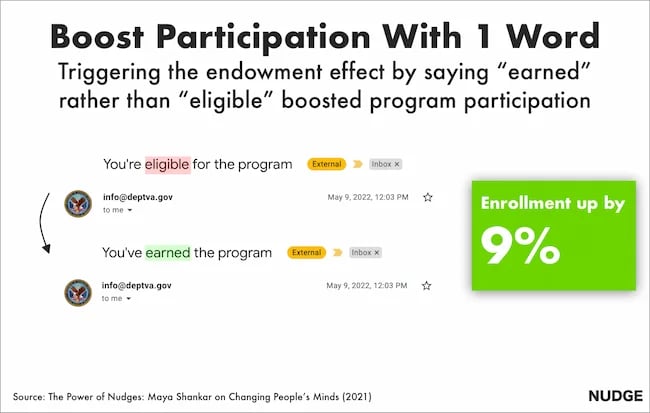
Inspired by these psychological tweaks to emails, I started to run my own tests.
Alongside my podcast Nudge, I’ve run 100s of email tests on my 1,000s of newsletter subscribers.
Here are the five best tactics I’ve uncovered.
1. Show readers what they’re missing.
Nobel prize winning behavioral scientists Daniel Kahneman and Amos Tversky uncovered a principle called loss aversion.
Loss aversion means that losses feel more painful than equivalent gains. In real-world terms, losing $10 feels worse than how gaining $10 feels good. And I wondered if this simple nudge could help increase the number of my podcast listeners.
For my test, I tweaked the subject line of the email announcing an episode. The control read:
“Listen to this one”
In the loss aversion variant it read:
“Don’t miss this one”
It is very subtle loss aversion. Rather than asking someone to listen, I’m saying they shouldn’t miss out. And it worked. It increased the open rate by 13.3% and the click rate by 12.5%. Plus, it was a small change that cost me nothing at all.
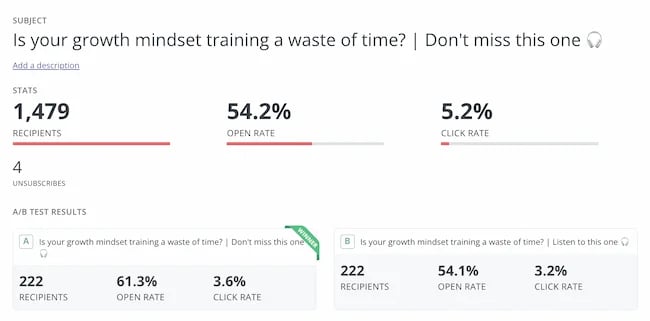
2. People follow the crowd.
In general, humans like to follow the masses. When picking a dish, we’ll often opt for the most popular. When choosing a movie to watch, we tend to pick the box office hit. It’s a well-known psychological bias called social proof.
I’ve always wondered if it works for emails. So, I set up an A/B experiment with two subject lines. Both promoted my show, but one contained social proof.
The control read: New Nudge: Why Brands Should Flaunt Their Flaws
The social proof variant read: New Nudge: Why Brands Should Flaunt Their Flaws (100,000 Downloads)
I hoped that by highlighting the episode’s high number of downloads, I’d encourage more people to listen. Fortunately, it worked.
The open rate went from 22% to 28% for the social proof version, and the click rate, (the number of people actually listening to the episode), doubled.
3. Praise loyal subscribers.
The consistency principle suggests that people are likely to stick to behaviours they’ve previously taken. A retired taxi driver won’t swap his car for a bike. A hairdresser won’t change to a cheap shampoo. We like to stay consistent with our past behaviors.
I decided to test this in an email.
For my test, I attempted to encourage my subscribers to leave a review for my podcast. I sent emails to 400 subscribers who had been following the show for a year.
The control read: “Could you leave a review for Nudge?”
The consistency variant read: “You’ve been following Nudge for 12 months, could you leave a review?”
My hypothesis was simple. If I remind people that they’ve consistently supported the show they’ll be more likely to leave a review.
It worked.
The open rate on the consistency version of the email was 7% higher.
But more importantly, the click rate, (the number of people who actually left a review), was almost 2x higher for the consistency version. Merely telling people they’d been a fan for a while doubled my reviews.
4. Showcase scarcity.
We prefer scarce resources. Taylor Swift gigs sell out in seconds not just because she’s popular, but because her tickets are hard to come by.
Swifties aren’t the first to experience this. Back in 1975, three researchers proved how powerful scarcity is. For the study, the researchers occupied a cafe. On alternating weeks they’d make one small change in the cafe.
On some weeks they’d ensure the cookie jar was full.
On other weeks they’d ensure the cookie jar only contained two cookies (never more or less).
In other words, sometimes the cookies looked abundantly available. Sometimes they looked like they were almost out.
This changed behaviour. Customers who saw the two cookie jar bought 43% more cookies than those who saw the full jar.
It sounds too good to be true, so I tested it for myself.
I sent an email to 260 subscribers offering free access to my Science of Marketing course for one day only.
In the control, the subject line read: “Free access to the Science of Marketing course”
For the scarcity variant it read: “Only Today: Get free access to the Science of Marketing Course | Only one enrol per person.”
130 people received the first email, 130 received the second. And the result was almost as good as the cookie finding. The scarcity version had a 15.1% higher open rate.

5. Spark curiosity.
All of the email tips I’ve shared have only been tested on my relatively small audience. So, I thought I’d end with a tip that was tested on the masses.
Back in 2012, Barack Obama and his campaign team sent hundreds of emails to raise funds for his campaign.
Of the $690 million he raised, most came from direct email appeals. But there was one email, according to ABC news, that was far more effective than the rest. And it was an odd one.
The email that drew in the most cash, had a strange subject line. It simply said “Hey.”
The actual email asked the reader to donate, sharing all the expected reasons, but the subject line was different.
It sparked curiosity, it got people wondering, is Obama saying Hey just to me?
Readers were curious and couldn’t help but open the email. According to ABC it was “the most effective pitch of all.”
Because more people opened, it raised more money than any other email. The bias Obama used here is the curiosity gap. We’re more likely to act on something when our curiosity is piqued.
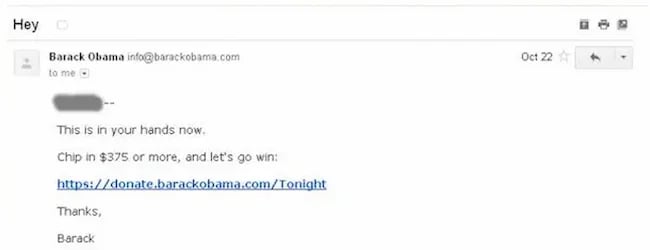
Loss aversion, social proof, consistency, scarcity and curiosity—all these nudges have helped me improve my emails. And I reckon they’ll work for you.
It’s not guaranteed of course. Many might fail. But running some simple a/b tests for your emails is cost free, so why not try it out?
This blog is part of Phill Agnew’s Marketing Cheat Sheet series where he reveals the scientifically proven tips to help you improve your marketing. To learn more, listen to his podcast Nudge, a proud member of the Hubspot Podcast Network.
MARKETING
The power of program management in martech

As a supporter of the program perspective for initiatives, I recognize the value of managing related projects, products and activities as a unified entity.
While one-off projects have their place, they often involve numerous moving parts and in my experience, using a project-based approach can lead to crucial elements being overlooked. This is particularly true when building a martech stack or developing content, for example, where a program-based approach can ensure that all aspects are considered and properly integrated.
For many CMOs and marketing organizations, programs are becoming powerful tools for aligning diverse initiatives and driving strategic objectives. Let’s explore the essential role of programs in product management, project management and marketing operations, bridging technical details with business priorities.
Programs in product management
Product management is a fascinating domain where programs operate as a strategic framework, coordinating related products or product lines to meet specific business objectives.
Product managers are responsible for defining a product or product line’s strategy, roadmap and features. They work closely with program managers, who ensure alignment with market demands, customer needs and the company’s overall vision by managing offerings at a program level.
Program managers optimize the product portfolio, make strategic decisions about resource allocation and ensure that each product contributes to the program’s goals. One key aspect of program management in product management is identifying synergies between products.
Program managers can drive innovation and efficiency across the portfolio by leveraging shared technologies, customer insights, or market trends. This approach enables organizations to respond quickly to changing market conditions, seize emerging opportunities and maintain a competitive advantage. Product managers, in turn, use these insights to shape the direction of individual products.
Moreover, programs in product management facilitate cross-functional collaboration and knowledge sharing. Program managers foster a holistic understanding of customer needs and market dynamics by bringing together teams from various departments, such as engineering, marketing and sales.
Product managers also play a crucial role in this collaborative approach, ensuring that all stakeholders work towards common goals, ultimately leading to more successful product launches and enhanced customer satisfaction.
Dig deeper: Understanding different product roles in marketing technology acquisition
Programs in project management
In project management, programs provide a structured approach for managing related projects as a unified entity, supporting broader strategic objectives. Project managers are responsible for planning, executing and closing individual projects within a program. They focus on specific deliverables, timelines and budgets.
On the other hand, program managers oversee these projects’ coordination, dependencies and outcomes, ensuring they collectively deliver the desired benefits and align with the organization’s strategic goals.
A typical example of a program in project management is a martech stack optimization initiative. Such a program may involve integrating marketing technology tools and platforms, implementing customer data management systems and training employees on the updated technologies. Project managers would be responsible for the day-to-day management of each project.
In contrast, the program manager ensures a cohesive approach, minimizes disruptions and realizes the full potential of the martech investments to improve marketing efficiency, personalization and ROI.
The benefits of program management in project management are numerous. Program managers help organizations prioritize initiatives that deliver the greatest value by aligning projects with strategic objectives. They also identify and mitigate risks that span multiple projects, ensuring that issues in one area don’t derail the entire program. Project managers, in turn, benefit from this oversight and guidance, as they can focus on successfully executing their projects.
Additionally, program management enables efficient resource allocation, as skills and expertise can be shared across projects, reducing duplication of effort and maximizing value. Project managers can leverage these resources and collaborate with other project teams to achieve their objectives more effectively.
Dig deeper: Combining martech projects: 5 questions to ask
Programs in marketing operations
In marketing operations, programs play a vital role in integrating and managing various marketing activities to achieve overarching goals. Marketing programs encompass multiple initiatives, such as advertising, content marketing, social media and event planning. Organizations ensure consistent messaging, strategic alignment, and measurable results by managing these activities as a cohesive program.
In marketing operations, various roles, such as MOps managers, campaign managers, content managers, digital marketing managers and analytics managers, collaborate to develop and execute comprehensive marketing plans that support the organization’s business objectives.
These professionals work closely with cross-functional teams, including creative, analytics and sales, to ensure that all marketing efforts are coordinated and optimized for maximum impact. This involves setting clear goals, defining key performance indicators (KPIs) and continuously monitoring and adjusting strategies based on data-driven insights.
One of the primary benefits of a programmatic approach in marketing operations is maintaining a consistent brand voice and message across all channels. By establishing guidelines and standards for content creation, visual design and customer interactions, marketing teams ensure that the brand’s identity remains cohesive and recognizable. This consistency builds customer trust, reinforces brand loyalty and drives business growth.
Programs in marketing operations enable organizations to take a holistic approach to customer engagement. By analyzing customer data and feedback across various touchpoints, marketing professionals can identify opportunities for improvement and develop targeted strategies to enhance the customer experience. This customer-centric approach leads to increased satisfaction, higher retention rates and more effective marketing investments.
Dig deeper: Mastering the art of goal setting in marketing operations
Embracing the power of programs for long-term success
We’ve explored how programs enable marketing organizations to drive strategic success and create lasting impact by aligning diverse initiatives across product management, project management and marketing operations.
- Product management programs facilitate cross-functional collaboration and ensure alignment with market demands.
- In project management, they provide a structured approach for managing related projects and mitigating risks.
- In marketing operations, programs enable consistent messaging and a customer-centric approach to engagement.
Program managers play a vital role in maintaining strategic alignment, continuously assessing progress and adapting to changes in the business environment. Keeping programs aligned with long-term objectives maximizes ROI and drives sustainable growth.
Organizations that invest in developing strong program management capabilities will be better positioned to optimize resources, foster innovation and achieve their long-term goals.
As a CMO or marketing leader, it is important to recognize the strategic value of programs and champion their adoption across your organization. By aligning efforts across various domains, you can unlock the full potential of your initiatives and drive meaningful results. Try it, you’ll like it.
Fuel for your marketing strategy.
Opinions expressed in this article are those of the guest author and not necessarily MarTech. Staff authors are listed here.
-

 PPC7 days ago
PPC7 days agoCompetitor Monitoring: 7 ways to keep watch on the competition
-

 WORDPRESS6 days ago
WORDPRESS6 days agoTurkish startup ikas attracts $20M for its e-commerce platform designed for small businesses
-

 PPC7 days ago
PPC7 days ago31 Ready-to-Go Mother’s Day Messages for Social Media, Email, & More
-

 SEARCHENGINES7 days ago
SEARCHENGINES7 days agoMore Google March 2024 Core Update Ranking Volatility
-

 PPC6 days ago
PPC6 days agoA History of Google AdWords and Google Ads: Revolutionizing Digital Advertising & Marketing Since 2000
-

 MARKETING5 days ago
MARKETING5 days agoRoundel Media Studio: What to Expect From Target’s New Self-Service Platform
-
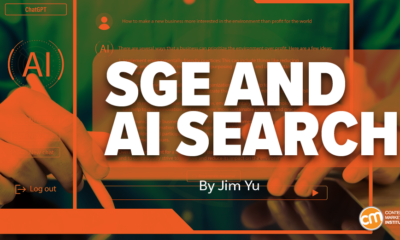
 MARKETING7 days ago
MARKETING7 days agoHow To Adapt Your SEO and Content Strategies for SGE and AI Experiences
-

 SEO5 days ago
SEO5 days agoGoogle Limits News Links In California Over Proposed ‘Link Tax’ Law












![5 Psychological Tactics to Write Better Emails → Download Now: The Beginner's Guide to Email Marketing [Free Ebook]](https://articles.entireweb.com/wp-content/uploads/2023/02/11-Free-Email-Hacks-to-Step-Up-Your-Productivity.png)
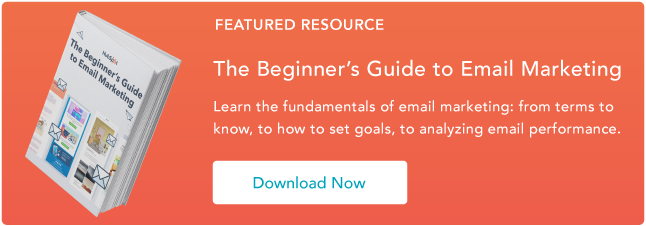

You must be logged in to post a comment Login